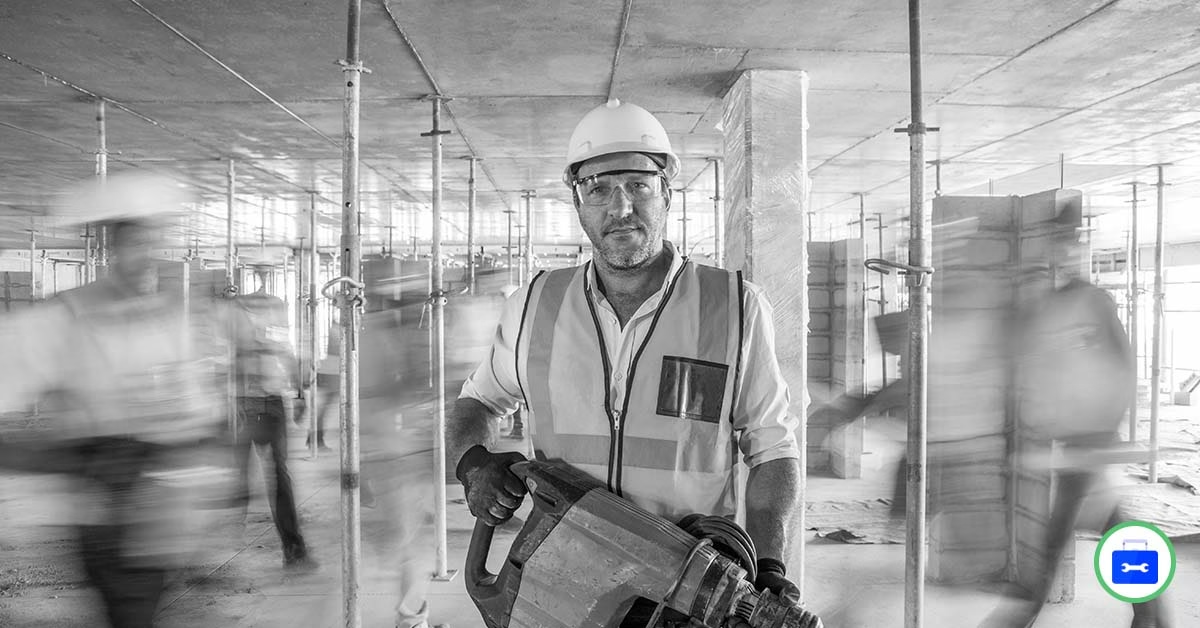Trade and support roles form the backbone of every construction project, but they also face…
Toolbox Talk – Top 10 Most Dangerous Jobs in Construction Part 1
High-risk construction work continues to account for a significant portion of workplace injuries and fatalities. In 2023 alone, the construction sector recorded 1,075 fatal injuries, more than any other industry, and an alarming 1,029 of these were preventable. Nearly 40% of all construction-related deaths stemmed from slips, trips, and falls.
A key insight to remember: most incidents occur during everyday, familiar tasks, not unusual or complex ones. This highlights the importance of staying alert, following safety procedures diligently, and treating routine work with the same focus as high-profile tasks.
Roofers
Roofing remains one of the most hazardous construction roles due to frequent work at height and exposure to environmental elements.
Key Risks: Falls from roofs, ladders, and scaffolding; burns from hot materials; exposure to asbestos and fumes.
2023 Statistics: 110 fatalities from falls, slips, and trips.
Safety Measures:
- Wear a harness and lanyard at all times.
- Ensure ladders are properly set up and secured.
- Keep roof surfaces clear of debris, moisture, and tripping hazards.
Steel and Ironworkers
Working with structural steel places workers at risk of falls, burns, and cuts, often in changing weather conditions and at significant heights.
Key Risks: Falls, lacerations, burns from tools and welding equipment.
Statistics: 16 steel/ironworker fatalities recorded in 2020.
Safety Measures:
- Use complete PPE: hard hat, harness, gloves, boots, safety glasses.
- Inspect welds, bolts, and lifelines before starting work.
- Never remove or bypass fall-protection systems.
Crane Operators
Crane operations demand precision, clear communication, and strict adherence to safety protocols due to the massive loads and powerful machinery involved.
Key Risks: Equipment malfunction, struck-by incidents, heat stress, fatigue.
Notable Statistic: Half of all fatal crane accidents involve a worker being struck by an object.
Safety Measures:
- Complete pre-operation safety checks.
- Maintain constant communication with spotters.
- Wear high-visibility clothing and eliminate distractions.
Demolition Workers
Demolition sites are unpredictable environments where structural instability and hazardous materials present serious risks.
Key Risks: Structural collapse, asbestos, dust inhalation, fires.
Statistics: 78 fatalities reported in 2020.
Safety Measures:
- Use respirators, goggles, hard hats, and other required PPE.
- Conduct hazard assessments before each demolition activity.
- Ensure only trained personnel handle explosive or structural demolition work.
Electricians
Electrical work carries some of the highest fatality rates across construction disciplines due to electrocution risks and exposure to live systems.
Key Risks: Electrocution, arc flashes, burns, hazardous materials.
Statistics: 855 electrician fatalities between 2011 and 2023; electrocution accounted for 8% of all construction deaths in 2021.
Safety Measures:
- Use insulated tools and gloves.
- Follow lockout/tagout procedures every time.
- Inspect cords, outlets, and panels before energising.
Key Takeaway
Every construction role carries inherent risks, but every risk can be controlled through awareness, proper PPE, hazard assessment, and a consistent commitment to safe work practices. Safety is not an event — it’s a daily discipline.
Source article: shulman-hill.com/most-dangerous-jobs-in-the-construction-field/
Download the full Toolbox Talk document on The Top 10 Most Dangerous Jobs in Construction Part 1 below:



